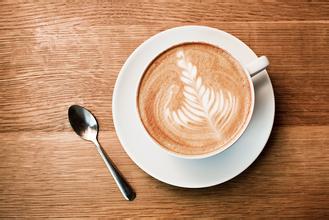How do coffee beans grow-- how many years does it take for coffee trees to bear fruit?
How do coffee beans grow-- how many years does it take for coffee trees to bear fruit?
The preservation environment has a great influence on raw coffee beans. The rate of change of ingredients in raw coffee beans will be affected by the environment, and the most affected by temperature and humidity. An increase in temperature will promote
With the change, the decrease of temperature will restrain the change. If you keep it in a place with high temperature and humidity for a long time, such as collection boxes (containers without air conditioning and great changes in temperature and humidity), it will promote the change of raw caffeine bean composition. Due to the high temperature and humidity in the summer rainy season, raw coffee beans are not easy to preserve.
It's the same thing. In order to avoid this environment and preserve the flavor of new beans, people will use empty collection boxes (air-conditioned containers) to transport raw coffee beans, and some countries will use constant temperature warehouses to keep them, so the fresh-keeping effect is much better.
At the beginning of the 20th century, overseas Chinese brought coffee back from Malaysia to grow in Hainan Province. Later, tropical and subtropical provinces in the south began to grow plant coffee one after another. Although the cultivation time is short, the coffee from Hainan and Yunnan provinces in China has excellent quality and unique charm, so it enjoys a high reputation in the world. After some foreign businessmen buy it at a low price, it is processed and sold to the international market. It has become an expensive world-class drink, especially the small-grain coffee grown in Yunnan Province. Because of the large temperature difference between day and night in Yunnan, it is conducive to the accumulation of substances in it. So it tastes strong but not bitter, fragrant but not strong, oily and fruity, so it is praised as "the best quality coffee in the world" by coffee merchants at home and abroad. [2]
The ripe coffee berries look like cherries and are bright red with sweet flesh and contain a pair of seeds, namely coffee beans (Coffee Beans). Coffee varieties can be divided into small-grain, medium-grain and large-grain species, the former contains low caffeine content and strong flavor, while the latter two have high caffeine content but poor flavor. Coffee sold in the world is generally made of small and medium seeds in different proportions, usually 70% of medium seeds, mainly caffeine, and 30% of small seeds, mainly for their aroma. Each coffee variety generally has a few to a dozen variants. Coffee is more resistant to shade and cold, but not resistant to light, drought and disease. Coffee contains nine kinds of nutrients, such as caffeine, protein, crude fat, crude fiber and sucrose. As a beverage, coffee is not only mellow and delicious, slightly bitter and sweet, but also can excite nerves and dispel fatigue. In medicine, caffeine can be used as an anesthetic, stimulant, diuretic and cardiotonic, as well as to help digestion and promote metabolism. The pulp of coffee is rich in sugar and can be used to make sugar and alcohol.
Through roasting, raw coffee beans can release the special aroma of coffee. Each coffee bean contains its fragrance, sour taste, sweetness and bitterness. How to release it incisively and vividly is to observe the heat of its baking, from the insipid raw bean to the mellow aftertaste in the cup. Roasting is a very important step in the long life of each coffee bean.
Coffee beans are about 10 or 20 minutes long (inversely proportional to the temperature) and the temperature is as high as more than 200 degrees Celsius. In the process of dialogue with the hot dish, coffee beans undergo many chemical changes, giving off a first explosion, a second explosion, a sound like popcorn, and loss of moisture. From raw beans, light and medium roasting to deep roasting, moisture is released again and again, the weight is reduced, but the volume slowly expands and bulges, the color of coffee beans deepens, the fragrant oil is gradually released, and the texture becomes crisp. At this time, the sour, sweet and bitter taste of coffee reached the most perfect balance, and the character of coffee beans was also clearly depicted by coffee plants, which would grow to about 10 meters without pruning. But people often control the height of coffee trees at about 3 meters in order to pick and harvest. The first opening period of the coffee tree is about three years old. the white five-petal tube-shaped flowers have a faint scent of orange and jasmine, and the inflorescences are arranged in dense clusters. The flowers will be grateful after two or three days of blooming, leaving only the fragrance to spin around in the air. After a few months, it began to bear fruit.
Coffee trees can only grow in the tropics and subtropics. Coffee trees can grow in different climates, soils, elevations and rainfall in the middle of the "coffee belt". Coffee trees thrive in the hot and humid canyons and forest rainforests of Africa; it still produces high-quality coffee beans in cold, foggy, windy Central America; and in the Caribbean, where the climate is changeable, drought and torrential rain, it still blossoms and bears fruit. These factors are the secret that coffee beans have different flavors and a wide variety.

Important Notice :
前街咖啡 FrontStreet Coffee has moved to new addredd:
FrontStreet Coffee Address: 315,Donghua East Road,GuangZhou
Tel:020 38364473
- Prev

The picking of coffee beans-what brand of coffee beans?
The picking of coffee beans-what brand of coffee beans is good? coffee trees can be divided into two main varieties: Arabica and Robusta. There are also some minor species, such as the Liberian species (Liberica) and the Alabasta species (Arabusta), but they are rare on the market. Arabica and Roberta are both widely cultivated, but
- Next

Introduction to different varieties and producing areas of coffee beans with different tastes
Coffee beans grind thick and fine taste different varieties produce area introduction French filter kettle, plug air, drip filter or mocha pot do not require high fineness of coffee powder. Knife milk grinder (commonly known as bean chopper or propeller grinder) can not adjust the scale, but to adjust the size of coffee powder according to the length of time, the size of coffee powder is uneven, so it is not suitable for making espresso. It is generally thought that as long as there is a strong one,
Related
- Guji coffee producing area of Guji, Ethiopia: Humbela, Shakiso, Wulaga
- What is the most expensive variety of Qiloso in BOP multi-variety group?
- How to store the coffee beans bought home?
- Why are Yemeni coffee beans so rare now?
- Ethiopian Sidamo all Red Fruit Sun Sun Santa Vini Coffee beans
- SOE is mostly sour? What does it mean? Is it a single bean? what's the difference between it and Italian blending?
- Is Italian coffee beans suitable for making hand-brewed coffee?
- How to choose coffee beans when making cold coffee? What kind of coffee beans are suitable for making cold coffee?
- Just entered the pit to make coffee, what kind of coffee beans should be chosen?
- Can only Japan buy real Blue Mountain Coffee? What are authentic Jamaican Blue Mountain coffee beans?

